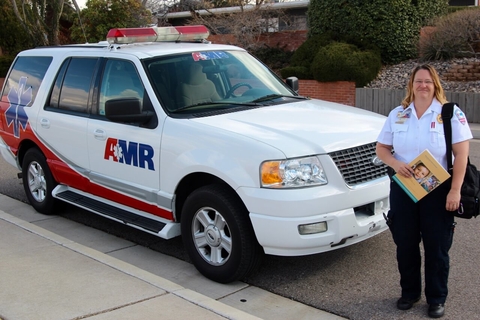From what Blue Cross Blue Shield of New Mexico has found, establishing a partnership with community paramedics is not only good medicine, it’s also good for business.
The insurer's Community Paramedicine program, which started out as a pilot project in the fall of 2015, is targeted at Medicaid members who have either been identified as emergency room superusers or are at high risk for readmission within 30 days of being discharged from the hospital.
BCBSNM chose those two populations because “we thought we could track those well and see if this is working,” Duane Ross, M.D., the insurer’s medical director, told FierceHealthcare.
Now, the insurer has produced promising preliminary results.
Since the program’s full launch in 2016, BCBSNM estimates that it saved $1.7 million—after taking into account the cost of the program itself. Among the 1,100 participating members, there was a 62% reduction in ER utilization and a 63% reduction in ambulance usage.
In addition, the 30-day readmission rate among BCBSNM’s members has dropped from 15% to 11.2% since it began the paramedicine program. While the insurer has undertaken multiple initiatives to lower that percentage, “we’re confident that this program was a big part of that reduction,” Ross said.
Just as important, Ross added, is the fact that "the paramedics indicate they’re actually very happy to be able to see people proactively rather than in a reactive fashion."
The anatomy of a house call
Most BCBSNM members involved in the Community Paramedicine program receive only one house call, Ross said—though there occasionally might be a follow-up visit.
First, though, they always call the member to ensure they’re OK with the visit taking place. As Ross puts it: “You don’t want to have a person in uniform knocking on your door unexpectedly.”

The primary-care discussion is particularly important for ER super-users who did not previously have insurance before signing up for Medicaid, Ross noted, because they tend to have a long-established habit of getting all their care through the emergency room.
“Sometimes it takes a visit to get them to make that switch,” he said. “Surprisingly, it actually sticks fairly well once they’re shown how to do that.”
Paramedics also conduct a home assessment to check, for instance, whether the residence has any hygiene issues, whether there are fall hazards and whether there’s food in the refrigerator. While paramedics can check patients’ vital signs, Ross noted, they don’t typically administer any other type of care.
For patients at risk of readmission, paramedics take the extra step of making sure they understand—and can follow—the hospital’s post-discharge care plan. That can involve ensuring they have a way to pick up any needed medications and know how to take them, and ensuring that they’re aware of and can find transportation to follow-up doctor visits.
Crucially, Ross, said, “we’re trying to get to them within 48 hours of the discharge, because if they lack transportation to pick up prescriptions, supplies or anything like that, the clock is ticking before they find themselves back in the hospital.”
Paramedics as partners
BCBSNM’s program is hardly the only instance of paramedics rethinking their traditional role as emergency responders.
For example, the North Memorial Health system in Minneapolis started a program in 2012 that used community paramedics to conduct home visits with patients who visited the ER nine or more times in a year. Similarly, the Valley Hospital in Ridgewood, New Jersey, launched a program 2014 to provide proactive, post-discharge home check-ups to certain patients with cardiopulmonary disease who are at high risk for readmission.
“This is actually a big movement,” Ross said. In fact, in Albuquerque, “the paramedics in the community had been looking at something like this for a while, but had not been able to get some of the logistics worked out.”
Therefore, BCBSNM figured out a “claims-based approach” to pay for home visits, which helped get the program off the ground. The result is the insurer has control over how many home visits are going to occur and who will receive them.
Besides working out a payment model, another secret to the Community Paramedicine program’s success is that the person running it is a paramedic himself, Ross noted. That helps establish trust and communication with the paramedic companies involved.
While BCBSNM is happy with the current scope of the program, in the future it’s interested in looking at the possibility of having paramedics conduct multiple visits with patients who have chronic conditions to help stabilize them, Ross said.
The insurer is also hoping to expand the program to cover more geographic areas than those in which it currently operates: Albuquerque, Belen, Rio Rancho, Las Cruces and Alamogordo. Because the paramedicine project has produced positive results and been well-received by paramedics, Ross said, “it’s easier to go out to more far-flung ambulance companies and even fire departments.”